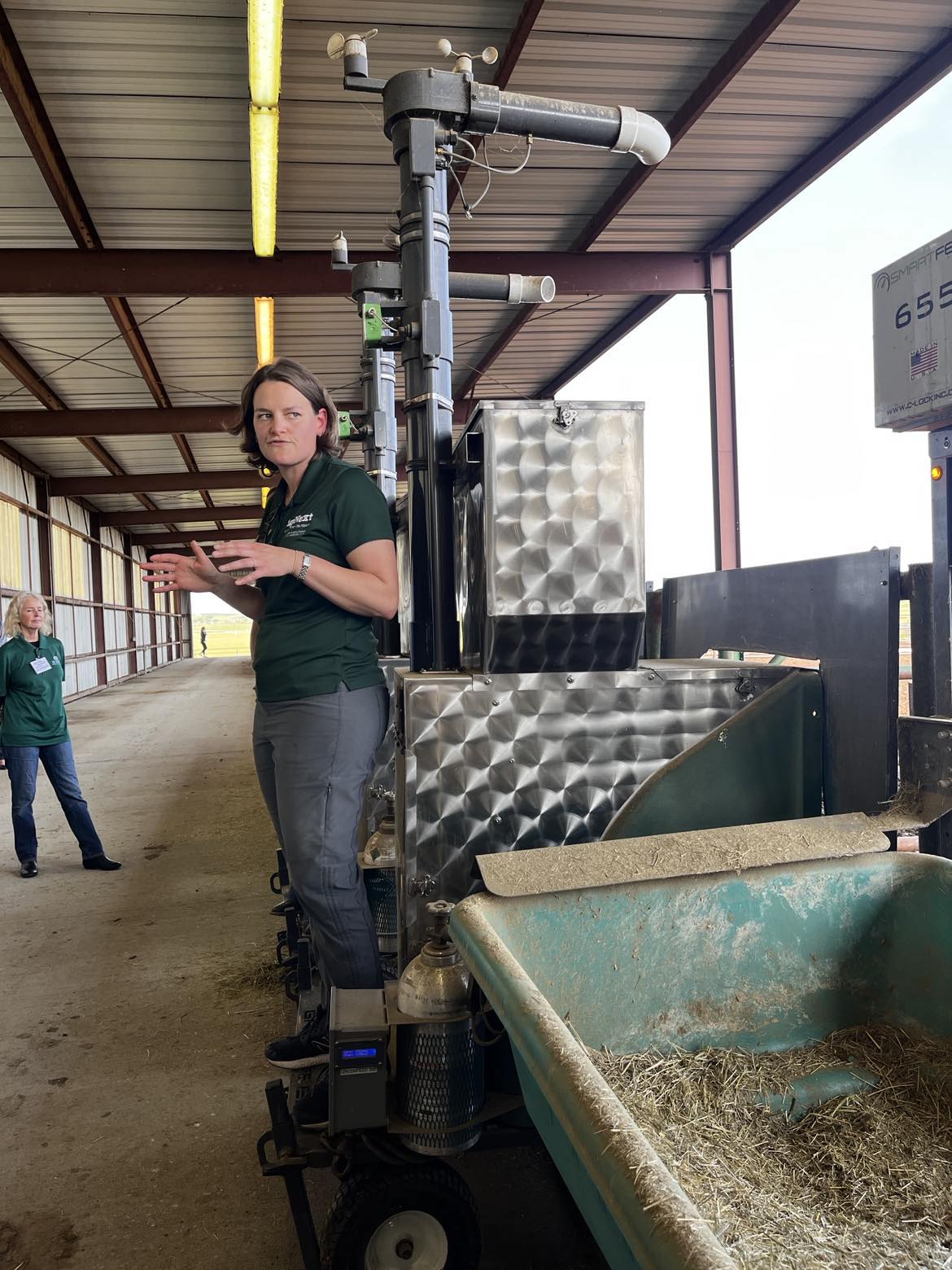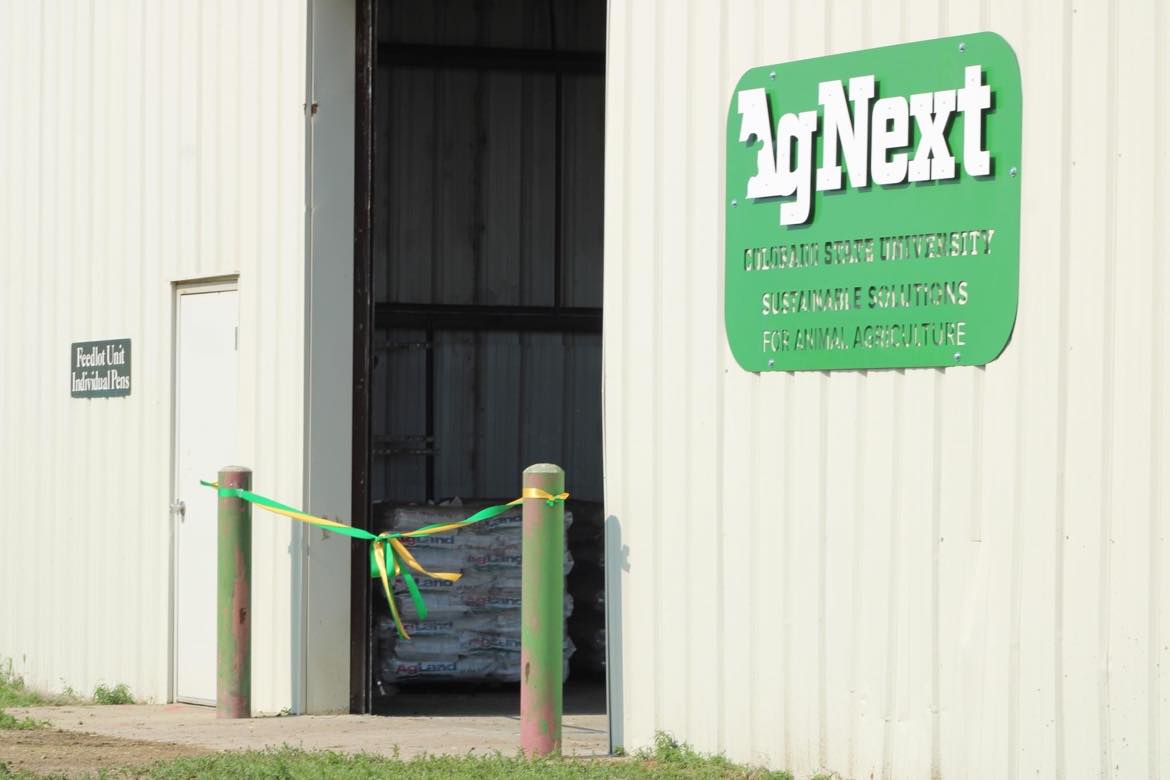America's Largest Cattle Emissions Research Facility Unveiled at Colorado State University

Nestled in a beautiful secluded mountain valley at an elevation of 9,000 ft., the Colorado State University (CSU) beef feedlot in Ft. Collins served as the location for AgNext’s climate-smart research facility ribbon cutting ceremony. According to Dr. Kim Stackhouse-Lawson, director of CSU’s AgNext program, the grand opening was not only the celebration of the unique partnership between academia and industry partners, but also salutes the facility and the research they’ve conducted to date.
“We hear from our stakeholders what they want us to work on and their most significant challenge is the emissions from beef and dairy production systems,” Stackhouse-Lawson says. “Although, measuring those incidents is very challenging. It's very expensive and it requires very specialized equipment to be able to do that. They said, ‘What do you need?’ With the support of industry partners, we have built the largest research facility of its kind in the United States.”
CSU’s feedlot is focusing on research for sustainability in animal agriculture and is equipped with 3 million dollars of equipment that allows scientists to track everything that goes into each cow, along with some of what comes out.
In April, Dairy MAX, who represents 900 farmers in eight states, including Colorado, aligned with CSU’s AgNext program to help support efforts to improve sustainability in animal agriculture.
“We are excited to work collaboratively with Dairy MAX and its farmers on the advancement of cutting-edge technology development and innovative management strategies that continue driving the dairy industry toward sustainable outcomes,” Stackhouse-Lawson said.
Measuring Cattle Emissions
Specialized feed bins use radio-frequency identification (RFID) technology to track every ounce of corn consumed on a per-cow basis. Another piece of equipment called the GreenFeed machine analyzes the gases cattle exhale.
Stackhouse-Lawson shares that their first GreenFeed machine arrived a year ago, but due to some early-on challenges, they were not able to successfully start measuring emissions until November of 2022.
Despite common misconceptions, the majority of methane comes out of the cow’s front end in the form of enteric emissions. So, each time a cow gets a snack from the GreenFeed machine, CSU staff can gather information.

“The air gets pulled from around the animal's face, and whatever they're respiring out goes directly into the machine. We can get real-time methane emissions data from that,” Stackhouse-Lawson explains.

The CSU staff says their goal is to find solutions that can best help mitigate emissions to cut the climate impact of beef.
“We also want to advance our work related to dairy sustainability,” Stackhouse-Lawson states. “Like how can we help develop scalable sustainable solutions for western dairies? How do we do a better job measuring the impact of those practices and then translate that into talking points so that people who are more interested in science can share those learnings.”
Stackhouse-Lawson shared that there is too much variability between animals and between regions for individual operations to know the individual carbon footprint of their own herds. She also says that initial data illustrates quantities of methane cows produce can vary wildly from animal to animal, suggesting an entirely new frontier for the research.
“Is there a genetic component?” Stackhouse-Lawson asks. “Would we select animals that have lower methane?”
The CSU team is also looking at other variables like feed additives that can cut emissions outright.

“The whole goal here is to learn what our greenhouse gas footprint is, and then how can we improve it,” Tom McDonald, Vice President of Environmental Affairs and Sustainability, said.
Five Rivers Cattle Feeding, LLC has loaned all the emissions research animals to CSU. In addition, Five Rivers also supplied the animals’ feed and has donated $600,000 worth of equipment to the cause, including the GreenFeed machines that collect and analyze cow exhalations.
“We are thankful to all our industry partners to make this research possible,” Stackhouse-Lawson says.







